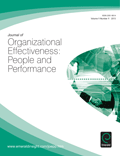Purpose
In 2006, Saks (2006) published one of the first empirical studies of the antecedents and consequences of employee engagement. Since then dozens of studies on engagement have been published and most of them have used the Utrecht Work Engagement Scale (UWES) to measure work engagement. The purpose of this paper is to revisit Saks (2006) to try and address some issues that have arisen during the last ten years and to assess the generalizability of his findings and model using the UWES measure of work engagement and single-item measures of job and organization engagement.
Design/methodology/approach
Additional analyses was conducted using the data from Saks (2006) including measures of each job characteristic, the use of the UWES measure of work engagement, and single-item general measures of job engagement and organization engagement. In addition, a review of engagement research was conducted as well as research that used Saks’ (2006) measures of job engagement and organization engagement.
Findings
The results indicate that skill variety is the main job characteristic that predicts job engagement. The results of the analysis using the UWES measure of work engagement found that job characteristics and perceived organizational support are significant predictors of work engagement, and work engagement predicts job satisfaction, organizational commitment, organizational citizenship behavior and intentions to quit and mediates the relationship between the antecedents and the consequences. Similar results were found using the single-item measures of job engagement and organization engagement. A review of the engagement literature indicates general support for the Saks (2006) model of the antecedents and consequences of employee engagement and for his measures of job and organization engagement. A revised and updated model is provided with additional antecedents and consequences.
Practical implications
The results indicate that organizations can drive employee engagement by focusing on skill variety as well as providing social support, rewards and recognition, procedural and distributive fairness, and opportunities for learning and development. In addition, organizations can assess employee engagement more frequently and easily by using single-item measures of job and organization engagement.
Originality/value
This paper provides an update and revision of the Saks (2006) model of employee engagement and suggests that the main findings are similar when using the UWES measure of work engagement and single-item general measures of job engagement and organization engagement.
Publication Type
- Article



